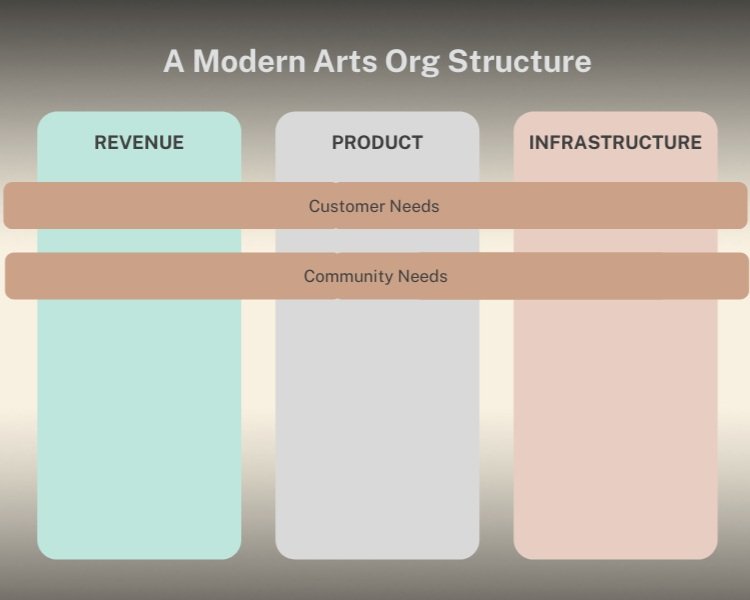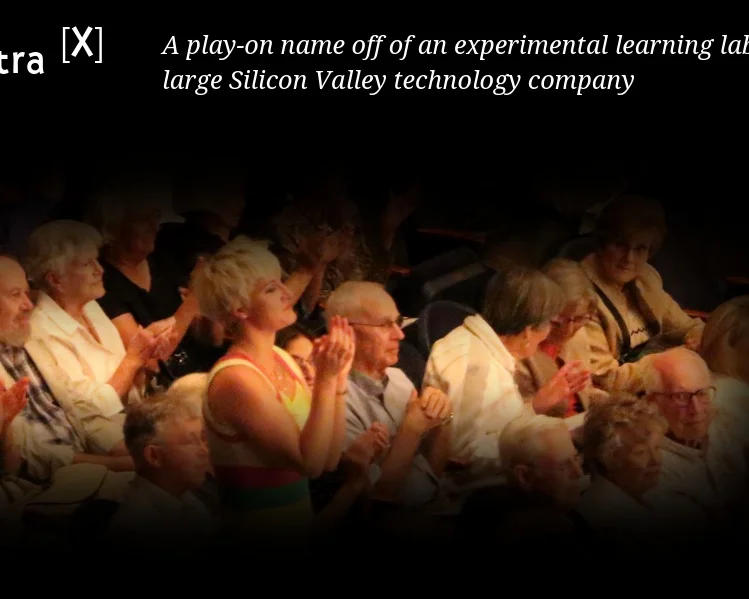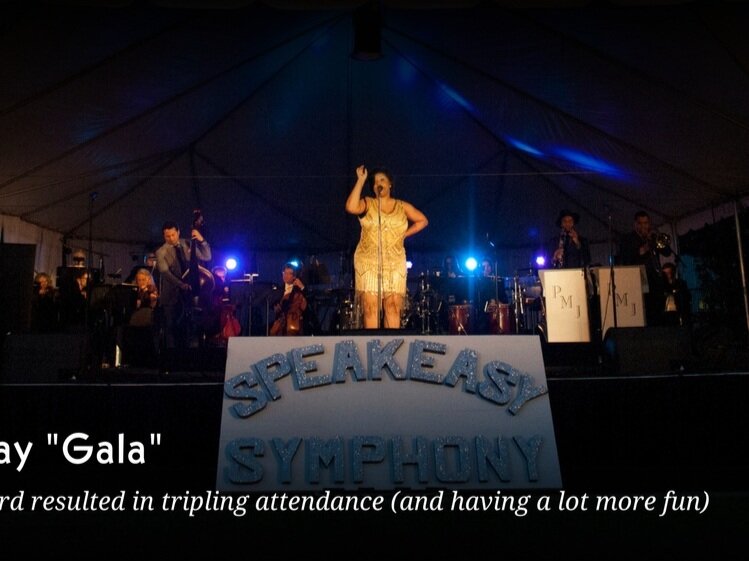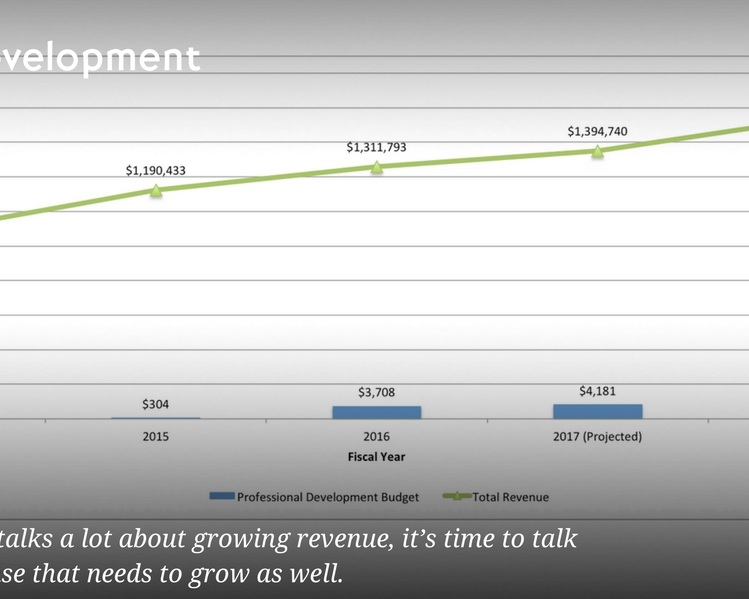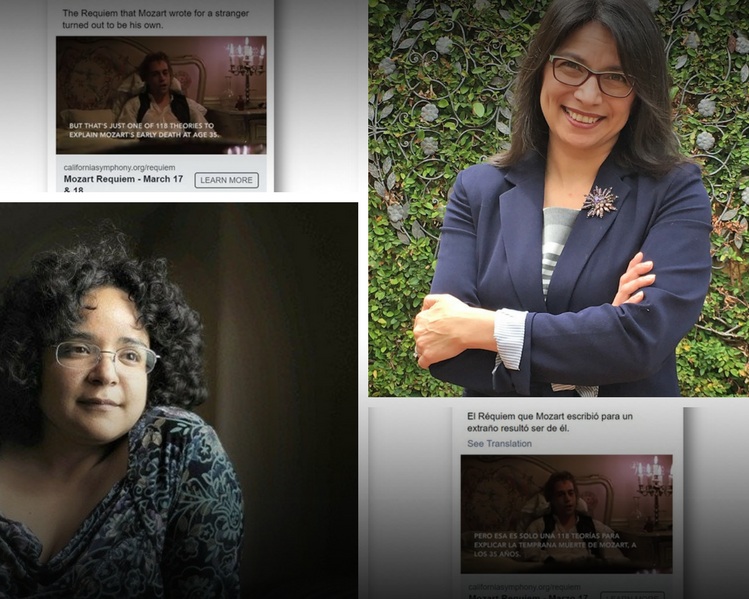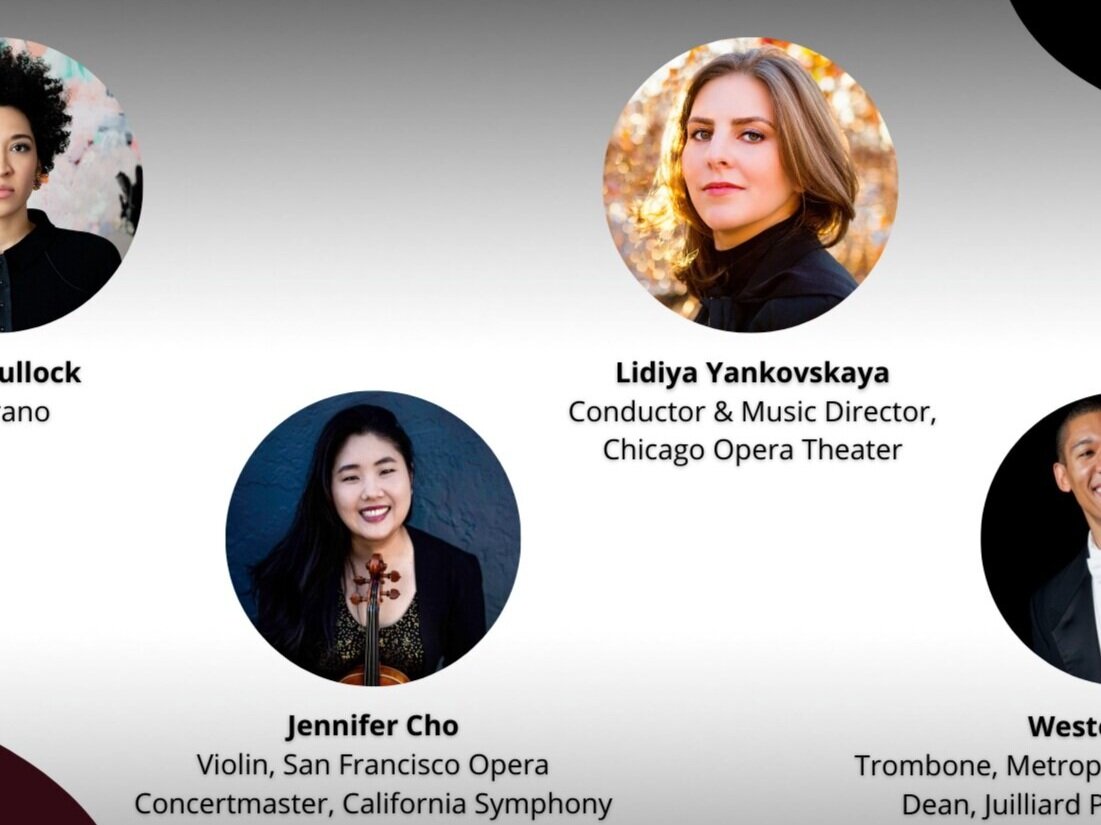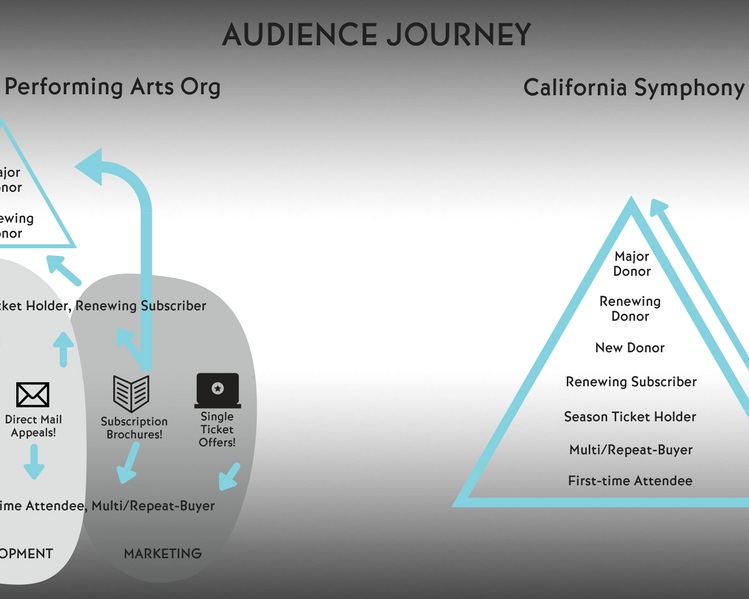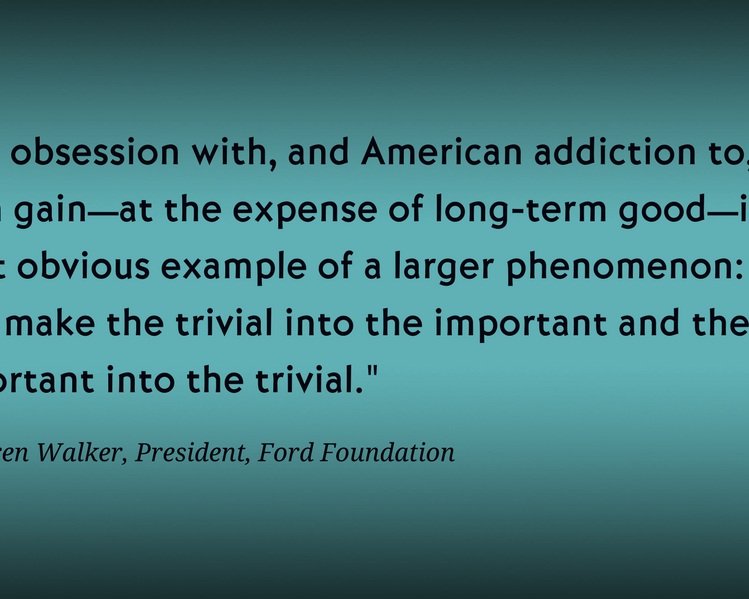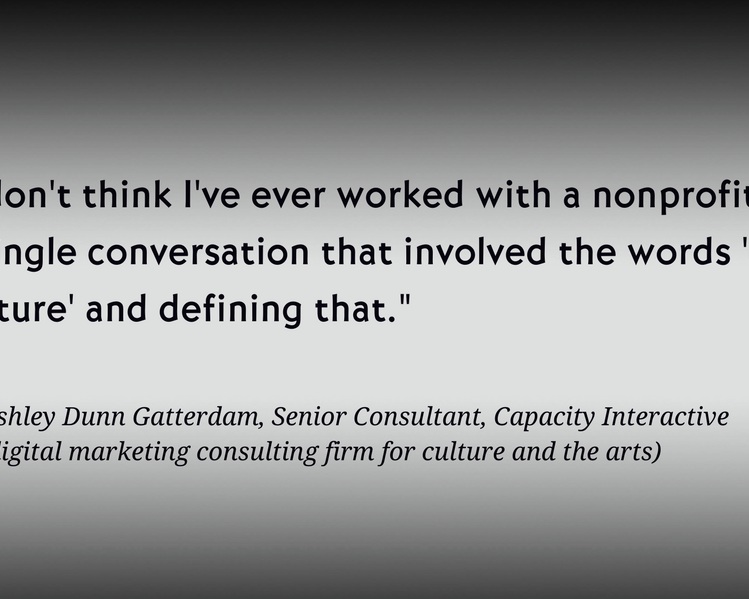Writing
MOST POPULAR
The Long Haul Model
In 2014, the California Symphony changed its approach to audience development, employing a long-term strategy that resulted in increased concert attendance, audiences getting younger, and more donors…
OTHER TOP READ ARTICLES
Designing A Modern Performing Arts Organization
The current org structure has worked well for arts organizations for a long time because we had to be really good at one thing: putting out high quality art. Now the world demands more. Here’s how to think about a structure that better serves the modern work required of cultural institutions.
CONTINUE READING >
Content Marketing: Why Every Arts Organization Should Be Doing It
Marketing is changing. Even in just the last year or so, it’s been changing: people don’t want to be overtly sold to, one-size-fits-all copy doesn’t capture attention, and traditional call to actions are no longer effective. All three of those tactics are now definitively out of the old school playbook, are out of touch…
CONTINUE READING >
What the Articles Aren’t Saying: 10 Solutions to Challenges in the Arts & Culture Business Model the Journalists Haven’t Mentioned
There have been a lot of concerning headlines in the arts lately. But the stories are all missing a big, root cause of the problem, as well as several worthwhile solutions…
CONTINUE READING >
CUSTOMER EXPERIENCE
Introducing Orchestra X
If you don’t know a lot (or anything at all) about orchestras, you are exactly who we’re looking for… The problem is that as a species we often rely too much on what we already know, and that’s precisely what makes change so hard. For orchestras though, we can’t continue to shy away from creating the change we need…
CONTINUE READING >
Orchestra X: The Results
Arts organizations must change the way we think about new audiences, and specifically, must change our willingness to have hard conversations about the things newcomers hate, are turned off by, or are just uninformed about. We decided if we at the California Symphony are serious about...
CONTINUE READING >
Orchestra X: Chapter Two
In the summer of 2016, the California Symphony put out the call for people who “should” go to the symphony but don’t… The following covers the Orchestra X findings we addressed or up-leveled since the original post in 2016, the still-remaining want-to-address items, why all this matters…
CONTINUE READING >
FUNDRAISING
Your Top 4 Most Asked Arts Management Questions for 2024
How do you motivate the Board to fundraise? How do you get your orchestra management to share budget numbers? How do you have a community presence when you don’t perform year-round? And one more.
CONTINUE READING >
Once & Done
How one tiny checkbox resulted in 17 times more donors when it should have done just the opposite… Just about every arts organization runs a donation campaign as they approach the end of their fiscal year…this is among the worst times and reasons to raise money…
CONTINUE READING >
Never Say “Gala”
How the California Symphony killed (and resurrected) its special events, and how one banned word resulted in tripling attendance and having a lot more fun… In fact, the ROI per each returning patron was 1403% in just one year.
CONTINUE READING >
Patron Courtship
Over the last three seasons, the donor base has nearly quadrupled and total dollars raised from individuals increased by 51%. This love affair isn’t a one-night stand… Arts administrators, get ready for this: we do not solicit first year subscribers for a donation. Ever…
CONTINUE READING >
COMPANY CULTURE
Designing A Modern Performing Arts Organization
The current org structure has worked well for arts organizations for a long time because we had to be really good at one thing: putting out high quality art. Now the world demands more. Here’s how to think about a structure that better serves the modern work required of cultural institutions.
CONTINUE READING >
Leaders Reframe False Dichotomies: Musicians vs. Management
The systemic issues within classical music that predate coronavirus have been amplified over the last several months. Part one of this series describes the need to recalibrate — or reframe — how we approach the false dichotomies in our work, and this post, part two of three, describes how we can work collaboratively…
CONTINUE READING >
The Great Reshuffle Presents a Massive Opportunity for Employers to Improve Representation
A lot of organizations talk about the need for better representation on our staffs, but don’t talk about how exactly to do that. If we don’t change the way we hire, we won’t see lasting change on our teams…
CONTINUE READING >
Talent Development
Orchestras have the best talent on stage. Our players have been to the best music schools, studied with the best teachers, and must bring their absolute best to ever hope to win an audition in this competitive field. And then they must perform their best if they hope to gain tenure. On the admin side, we often don’t measure up to that…
CONTINUE READING >
DIVERSITY, EQUITY, & INCLUSION
Gender-based Discrimination in the Arts Exists, And Here’s the Research Behind It
Research about gender breakdown in creative and administrative roles in opera, theater, museums, ballets, orchestras, and jazz companies. As well as research behind why these issues persist—it starts earlier than you think, and hiring more women to the C-suite does not solve it.
CONTINUE READING >
Anonymous Composer Selection Process
Eliminating unintentional gender bias in our composer selection process.“It’s not easy,” wrote The New York Times recently about women who compose classical music (in this case, opera) for a living. And they were right. We decided to face the music (pun very much intended) and address this issue head-on in our selection process…
CONTINUE READING >
Multiculturalism: It’s Not About Serving Mexican Food to Mexican People
If food can appeal to multiple ethnicities and cultural groups other than those of its origin, then classical music — specifically our core product in the Western European tradition — can appeal to multiple ethnicities and cultural groups if we properly set people up to feel invited and to understand and enjoy it.
CONTINUE READING >
What Does A White Person of Privilege Say?
As I scrolled through social media this weekend, I wavered back and forth on wanting to add my voice to the outpouring of support (to be silent is to be complicit, right?), yet trying to reconcile the weight of coming up short (words fail right now, talk is cheap, and what’s one more white voice…
CONTINUE READING >
A Public Commitment to Diversity
Most people don’t want to hold preconceptions, adhere to stereotypes, and employ biases, whether conscious or unconscious. The vast majority of us want to make progress in our field, want to advance our art form, and want to represent our communities in our work. And most of us know that research shows that diverse teams lead to better decision making…
CONTINUE READING >
Orchestra CEO’s: The Smaller the Budget, the More Likely Female
In honor of Women’s History Month, new data confirms that smaller budget organizations are more likely to be led by women and larger budgets by men. This post covers why this is happening, plus most important, what to do about it in order to make change going forward…
CONTINUE READING >
LEADERSHIP
The Flywheel: A Post-Pandemic Business Plan
This flywheel model is about keeping our patrons connected so they spend more time and money with us, taking the next steps in addressing systemic discrimination in our organizations, creating new revenue opportunities, and using our recently developed competencies in streaming and virtual offerings to drive loyalty…
CONTINUE READING >
11 Must-Haves For Growth at An Orchestra (Or Any Arts Organization)
The arts are a hard business. From being in a highly labor-intensive industry, to deep and long running emotions between management and musicians, to being under fire for lack of diversity, to a limited administrative talent pool, managing an arts organization is no cakewalk…
CONTINUE READING >
Leaders Reframe False Dichotomies: Restoration vs. Opportunity
Every arts organization is at a crossroads now. Do we do everything we can to return to business as soon as possible, or do we double down on planning for a future that looks different than our past? Do we restore the way things were pre-covid or embrace the opportunity for change?
CONTINUE READING >
3 Misconceptions About Change at Arts Organizations and 5 Things That Actually Work Instead
I hear a lot of frustration when it seems like change is obviously needed, but there’s resistance. Turns out, a lot of us have been taught wrong misconceptions about what actually motivates humans to do things differently.
CONTINUE READING >
Changing the Narrative
In 2013, the California Symphony was about to close its doors. Donations and ticket sales were down, concerts were half empty (or filled by papering the house, i.e. comping tickets), the original founding music director and the Board parted ways, and the organization was without an executive director for about a year…
CONTINUE READING >
12 Biases We Don’t Know We Have That Make Our Jobs Harder
If you’ve ever thought it was difficult to see the concert experience through the eyes of a newcomer, or wondered if hiring for “culture fit” is the right approach (hint: it’s not), or noticed that colleagues often listen to anecdotes over data, there are psychological reasons why…
CONTINUE READING >
A View of the Field After 50 Clients: Lots to Do, But it CAN Be Done
When I left the California Symphony in 2019, I said I wanted to make a broader impact on the field beyond one organization. What I didn’t know was how much I’d gain in return: an elevated view of the performing arts landscape I never would have seen otherwise…
CONTINUE READING >
Run It Like A Business…And Why I Used to Hate That Phrase
Love or hate that phrase, the arts are a business — a $1.02 trillion sector whose 100,000+ organizations serve almost every county in the nation. And it turns out that the arts are in some ways—even many ways—not that different than some of our for-profit counterparts.
CONTINUE READING >
What Does “Relevant” Even Mean?
Arts organizations talk a lot of about “being relevant,” but I’ve yet to hear any arts leader define what they think that means. It’s not an overused buzzword—it matters a lot if we get it right, so much so that one company, global consultancy Prophet, goes so far as to say that relevance is the most reliable indicator of a brand’s long term success…
CONTINUE READING >
Leaders Reframe False Dichotomies: Content Creators vs. Owners
The pandemic isn’t solely responsible for upending classical music. But it has exacerbated and exposed symptoms and problems that already existed: limited revenue streams, narrow customer base, inadequate cash reserves, and a lagging digital presence…
CONTINUE READING >
What the Articles Aren’t Saying: 10 Solutions to Challenges in the Arts & Culture Business Model the Journalists Haven’t Mentioned
There have been a lot of concerning headlines in the arts lately. But the stories are all missing a big, root cause of the problem, as well as several worthwhile solutions…
CONTINUE READING >
Scarcity Mindset is Killing Your Arts Organization
Nearly half of all arts leaders are anticipating a budget deficit this year. But thankfully, scarcity mindset is a curable disease. This article offers five steps that helped me overcome scarcity mentality when I was in the executive hot seat.
CONTINUE READING >
Things You Were Never Taught About Your Career in Arts Management
Let’s be honest, sometimes navigating a career in arts management can be really tough. I used to think I was the only one frustrated by an industry full of things I was never taught in my musical training, not to mention the gatekeeping, sexism, racism, and a lot of unwritten rules. But now after about 20 years in this business, I realize how pervasive these issues are.
CONTINUE READING >
CAREER DEVELOPMENT
Things You Were Never Taught About Your Career in Arts Management: Part 2
Let’s be honest, sometimes navigating a career in arts management can be really tough. How do you get buy-in for your ideas? How can you manage-up to your boss or board to help drive the relationship in ways that help you grow and deliver great work? How do you know when it’s time to quit, or when sticking it out is advantageous?
CONTINUE READING >
Things You Were Never Taught About Your Career in Arts Management: Part 3 of 3
Everywhere I go, I get a version of some similar questions. When the conversation is around revenue, the questions inevitably are “How do I get my board to embrace new strategies?” or “How do I get my team members at my traditional institution to do things differently?”
CONTINUE READING
Three New Case Studies of Arts Organizations That Are Growing Their Audiences & Revenue
Not that Isaac Newton’s laws of motion need further proof. But “an object in motion will remain on that path unless acted on by an outside force” is a great metaphor for arts organizations these days.
CONTINUE READING >
Audience Development: The Long Haul Model
In 2014, the California Symphony changed its approach to audience development, employing a long-term strategy that resulted in increased concert attendance, audiences getting younger, and more donors… There is big money on the table, which in turn allows us to better serve our mission…CONTINUE READING >
AUDIENCE DEVELOPMENT
The Long Haul Model: Challenges of Implementation
Focusing on the short term is prevelant when you consider that almost all our board members come from for-profit companies, and corporations—especially publicly traded ones—face incredible pressure to serve the short term…
CONTINUE READING >
The Orchestra Myth
There is a big myth in the orchestra world. In the entire arts world, really. A falsehood so ingrained and so believed that seemingly everyone — staff, board members, journalists, and even the general public — spout it like gospel. The trouble is that continuing to factualize this fiction is to our own detriment. It is a myth that we need new audiences…
CONTINUE READING >
How The Long Haul Model Scales
This post covers questions on scalability — in other words, how The Long Haul Model can be implemented at organizations of varying staff and budget sizes — as well as answers questions on staffing structure and why company culture matters in this discussion…
CONTINUE READING >
If You Only Do One Thing This Season
The 21st century is one fifth over, and for a lot of our organizations, we’ve wasted nearly the last twenty years only tweaking how things used to be done, while consumer behavior and marketing trends are passing us by. If you only do one thing this season, let it be to implement these marketing strategies proven in other industries.
CONTINUE READING >
Why I Don’t Like Free Concerts
Offering free performances is an ineffective strategy: they’re not growing audiences, nor building tons of new support, and it hurts us when people don’t see how much it costs to produce this art. There are five reasons why free concerts are not serving us well, and I also offer four better ways to raise awareness for our organizations.
CONTINUE READING >
Three Case Studies of Orchestras That Are Growing Their Audiences
They’re of different budget sizes, different locations, and they took different approaches. But what they have in common is they implemented customer-centered strategies, and they have consistently grown their audience over the last 2-6 years. CONTINUE READING >
The Long Haul Model: Where/How to Begin
After you have worked through internal changes to be made before implementing the Long Haul Model and sorted out your staff structure to support this work, you’re ready to put the pedal to the metal. So where on earth do you begin? This final post in the three-part series is the most tactical, walking you through step by step.
CONTINUE READING >
PROGRAMMING
Developing An Audience That Likes Classical Music [Programming]
In a time when a lot of orchestras, or at least a lot of music directors and artistic personnel, argue that pops (or film concerts or collaborations with Ben Folds or whatever) is the “money maker that detracts from the real music,” it is possible that we as administrators are in fact creating this dichotomy, this tension…
CONTINUE READING >
Multiculturalism: It’s Not About Serving Mexican Food to Mexican People
If food can appeal to multiple ethnicities and cultural groups other than those of its origin, then classical music — specifically our core product in the Western European tradition — can appeal to multiple ethnicities and cultural groups if we properly set people up to feel invited and to understand and enjoy it.
CONTINUE READING >
BOOK REVIEWS
2025 Book Review
This year’s roundup spans organizational development to behavioral economics, fundraising to identifying your professional values, and of course, Taylor Swift.
CONTINUE READING >
2024 Book Review
This year was about growth. It’s always about growth — professionally and personally for sure — and this year was about growth in my business as well.
CONTINUE READING >
2023 Book Review
Our work at orchestras, operas, dance companies, theaters, museums, and other arts organizations is not getting any easier, but a new crop of experts (authors) are here to help.
CONTINUE READING >
2022 Book Review
Business related books I read this year with a brief review of each through the lens of an arts administrator. Cheers to another year of learning and growing.
CONTINUE READING >
2021 Book Review
Business related books I read this year with a brief review of each through the lens of an arts administrator. Cheers to another year of learning and growing.
CONTINUE READING >
2020 Book Review
Titles consumed with a brief review of each through the lens of an arts administrator. Here’s to continuing to push ourselves as leaders to learn and grow.
CONTINUE READING >
2019 Book Review
Titles consumed with a brief review of each through the lens of an arts administrator. Here’s to continuing to push ourselves as leaders to learn and grow.
CONTINUE READING >
2018 Book Review
Titles consumed with a brief review of each through the lens of an arts administrator. Here’s to continuing to push ourselves as leaders to learn and grow.
CONTINUE READING >
2017 Book Review
Titles consumed with a brief review of each through the lens of an arts administrator. Here’s to continuing to push ourselves as leaders to learn and grow.
CONTINUE READING >
ARTS ADVOCACY
Fact: The Arts Industry Is Bigger Than Agriculture
The arts and culture sector represents 4.2% of the nation’s GDP — a larger share of the economy than transportation, warehousing, or agriculture. In 2015 (the most recent reporting year), the arts added four times more to the U.S. economy than…
CONTINUE READING >
Arts Advocacy Day Tool Kit: Fast & Easy Ways for You to Participate
In March of 2017, the NEA and NEH first became under threat of elimination, so this post was created with tools that can still be used for any arts advocacy efforts today, including sharable images and sample letters to elected officials…
CONTINUE READING >
Restart the Arts: Guidelines for Safe Reopening Benefit All of Us
With a vaccine estimated to be fully distributed in Q3 or Q4 of 2021, the arts are only halfway or less through the pandemic crisis without restart guidelines allowing for safe operations sooner. This post is an appeal to government officials…
CONTINUE READING >

